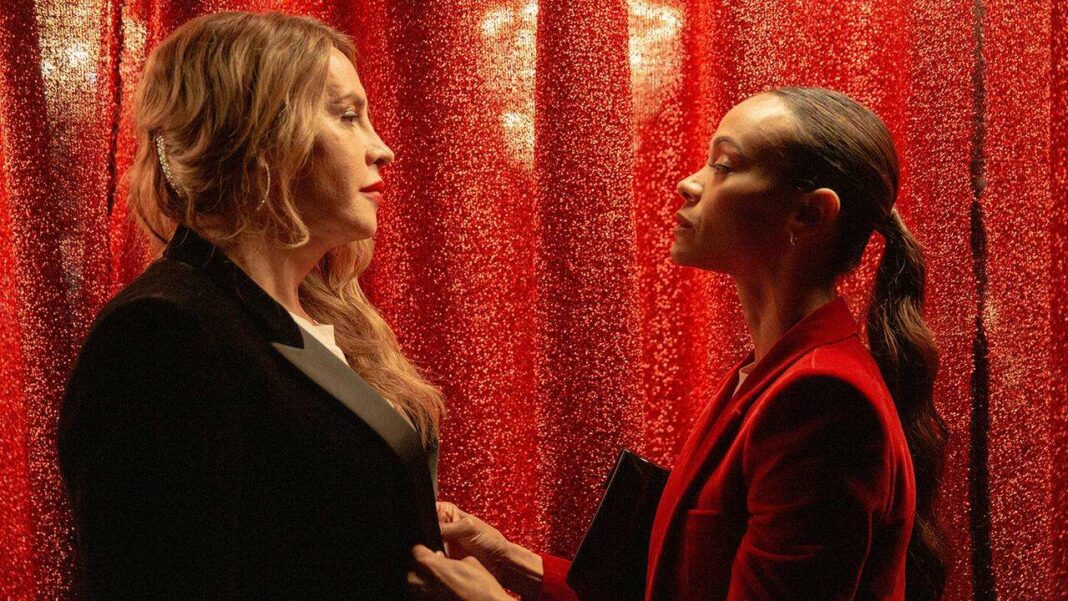AI is transforming film production by enhancing performances, but it raises concerns about authenticity. Examples include the use of AI to modify voices in films like ‘Emilia Pérez’ and ‘The Brutalist.’ While some argue this threatens genuine representation, others, like philosopher Dorothea Winter, suggest that artistic expression often involves distortion. The debate continues as the Oscar Academy plans to implement regulations on AI usage by 2026, highlighting the challenge of maintaining human authenticity in an increasingly tech-driven industry.
The Impact of AI on Film Production
Artificial intelligence is revolutionizing the film industry, allowing filmmakers to enhance voices and refine accents digitally. However, this raises a crucial question: how much alteration can an actor’s performance endure before it loses its authenticity?
Artistic Integrity vs. Technological Enhancement
A haunting voice croons ‘El Amor’ with a melancholic and virtuosic tone. Karla Sofía Gascón portrays a Mexican drug lord undergoing gender reassignment in Jacques Audiard’s ‘Emilia Pérez’, drawing inspiration from her own experiences as a trans actress. Yet, what the audience hears is not solely her voice. Sound mixer Cyril Holtz has confirmed the use of AI technology to enhance the singing, as Gascón’s voice, altered by her medical transition, was not suitable for certain musical passages.
In another instance, the editor of ‘The Brutalist’ disclosed that Adrien Brody’s role as Hungarian architect László Tóth was also digitally modified using AI. These examples highlight a growing trend in Hollywood, sparking lively debates regarding the implications of such technological interventions. Critics argue that this practice threatens the essence of authentic representation in film.
Philosopher Dorothea Winter offers a more composed perspective, stating, “Films are ultimately works of art that do not aim to depict realities one-to-one; otherwise, it would be a documentary.” She emphasizes that cinema is allowed to make artistic statements, which may involve distortion and exaggeration.
Winter also points out the long-standing tradition of artistic embellishments in filmmaking, where actors are styled, lit, and accompanied by music, and no one questions the authenticity of their appearances or performances.
In ‘The Brutalist’, the challenges of language became evident. Hungarian editor Dávid Jancsó acknowledged Hungarian as “one of the most difficult languages to pronounce” for English speakers. The Ukrainian AI tool Respeecher provided a solution, refining specific letters and vowels without compromising the overall performance.
While this technical assistance seems beneficial, it raises concerns about the future of acting. If voices and accents can be perfected digitally, what becomes of actors who dedicate years to mastering these skills?
Winter warns of the ethical implications: “Actors risk being reduced to mere training objects for AI.” This concern is particularly pressing given the rapid advancements in technology, as she notes, “AI does not require breaks or vacations and operates solely based on its programming.”
AI’s influence extends across various facets of film production. In ‘Furiosa’, digital technology gradually transforms a young actress into her older counterpart, played by Anya Taylor-Joy. ‘Alien: Romulus’ employs AI to resurrect the late Ian Holm digitally, while in ‘Dune: Part Two’, AI assisted in creating the iconic blue eyes of the Fremen, significantly reducing production time.
Referencing Hannah Arendt’s philosophy on human action, Winter argues that the unique expressions and personal touch of actors define their artistry. She questions whether slight imperfections, such as a non-perfect accent, could truly alter a film’s artistic impact or if human flaws might sometimes surpass the flawless nature of AI.
In response to these developments, the Oscar Academy is taking action. While there have been optional guidelines for AI use, the Academy’s scientific-technical council is working on mandatory regulations set to be implemented in 2026.
Ultimately, the core challenge remains: how can human authenticity be preserved in an art form increasingly dominated by technical precision? It might just be the minor imperfections—like an imperfect accent or a distinctive voice—that render film characters relatable and genuinely human.
